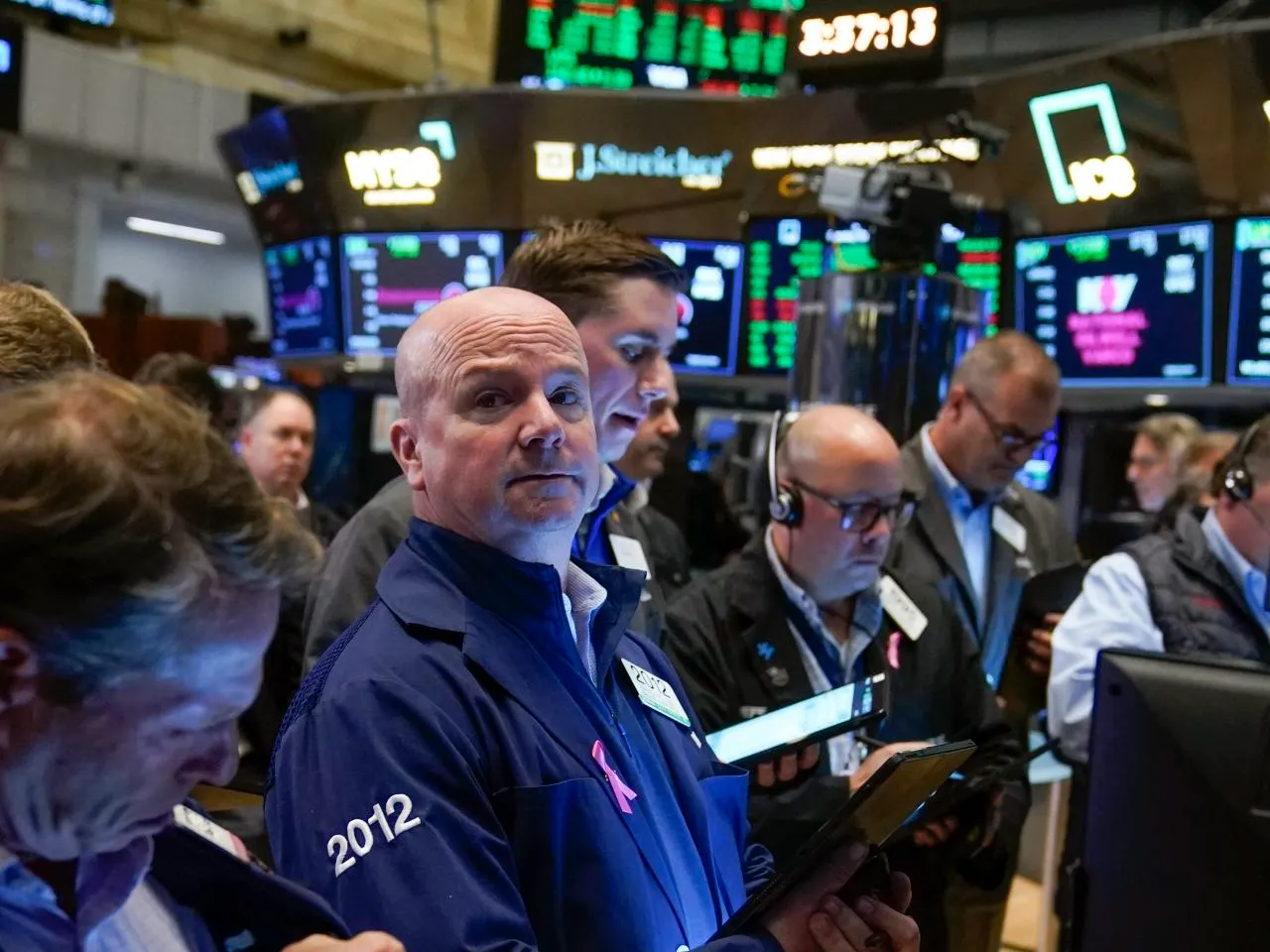U.S. equity futures advanced Monday as investors grew more confident that a strong economy and an upcoming round of Federal Reserve rate cuts will continue to bolster corporate profits. Optimism around a major artificial intelligence infrastructure deal also reinforced the view that AI-related spending remains a key growth engine for the market.
Futures tied to the S&P 500 climbed roughly 0.4%, extending last week’s more than 1% gain, even as the ongoing U.S. government shutdown delayed key economic reports. The Nasdaq 100 futures rose nearly 1%, driven by renewed enthusiasm for AI stocks. Meanwhile, the 10-year Treasury yield increased by about four basis points, and the U.S. dollar index edged higher.
Advanced Micro Devices (AMD) surged as much as 28% in premarket trading after announcing a multiyear deal with OpenAI to build out AI infrastructure an agreement that could generate tens of billions of dollars in new revenue for the chipmaker.
Other notable movers included Tesla, which gained after teasing a new product announcement, and Comerica Inc., which jumped following news that Fifth Third Bancorp will acquire it in a $10.9 billion transaction. Fifth Third’s own shares, however, fell following the announcement.
According to strategists at Goldman Sachs Group Inc., U.S. companies are on track for a stronger-than-expected earnings season. They see a combination of a resilient economy and ongoing AI optimism setting the stage for corporate profits to outperform forecasts. Goldman’s team, led by David Kostin, also expects the so-called “Magnificent Seven” tech giants to deliver better-than-anticipated results.
Recent private-sector data hinted at a cooling labor market and softer demand, but without triggering broader economic concerns. This has strengthened investor conviction that the Federal Reserve will move forward with another quarter-point rate cut in October even as the government shutdown continues and federal workers face potential job losses.
“The base-case scenario still points to slow but steady growth, easing inflation pressures, and a gradual rate-cutting cycle by the Fed toward year-end,” said Linh Tran, market analyst at XS.com. “In that environment, the S&P 500 should continue to trend higher, supported by stable earnings, fair valuations, and sustained institutional inflows.”
Across the Atlantic, France’s CAC 40 index fell as much as 2.1% amid renewed political turmoil. The broader Stoxx Europe 600 wavered, while European bonds declined and the euro weakened.
French banks Societe Generale, Credit Agricole, and BNP Paribas led the losses after Prime Minister Sebastien Lecornu resigned just a day after President Emmanuel Macron unveiled a new cabinet. His resignation deepened France’s ongoing political crisis and pushed the nation’s 10-year bond yield higher.
Lecornu’s exit marks the third consecutive prime minister to face challenges passing a budget through a divided parliament a task complicated by unpopular spending cuts and tax hikes meant to rein in Europe’s largest budget deficit.
“
Alongside this political turmoil, an economic slowdown may follow as investor sentiment weakens due to uncertainty surrounding France’s wide fiscal deficit,” said Stephane Ekolo, strategist at TFS Derivatives. “Banks and financials are likely to remain under pressure.”
Meanwhile, the U.S. government shutdown, which began Wednesday, has fueled what traders are calling the “debasement trade,” as investors flock to assets perceived as safe stores of value. Gold climbed above $3,900 an ounce, setting another record high, while Bitcoin also reached a new all-time high over the weekend.
John Bilton, global head of multi-asset strategy at JPMorgan Asset Management, cautioned that the growing perception of gold as a “pure safe asset” could be worrisome, given its historical volatility.
In Asia, Japan’s Nikkei 225 jumped 5%, hitting an all-time high after Sanae Takaichi emerged as the likely next prime minister. The yen tumbled nearly 2% to 150 per dollar, also hitting a record low against the euro. Longer-dated Japanese government bonds posted their steepest decline in months on concerns that a Takaichi-led government could increase debt issuance to fund tax cuts.
Takaichi’s unexpected victory in the ruling Liberal Democratic Party leadership race reduced expectations for a Bank of Japan rate hike this month, while raising the likelihood of new fiscal stimulus. Markets are now pricing in just a 25% chance of a rate increase, down sharply from 60% before the leadership vote.
Oil prices also advanced after OPEC+ agreed Sunday to restore only 137,000 barrels a day of halted production a slower pace of output recovery compared to earlier this year.
With AI-driven optimism lifting tech shares, the Fed’s expected easing cycle supporting risk appetite, and political uncertainty abroad adding to global volatility, markets are balancing optimism with caution. For now, investor sentiment remains upbeat anchored by the belief that both innovation and policy support will continue to fuel the next phase of market growth.

Subscribe to our newsletter!
As a leading independent research provider, TradeAlgo keeps you connected from anywhere.








